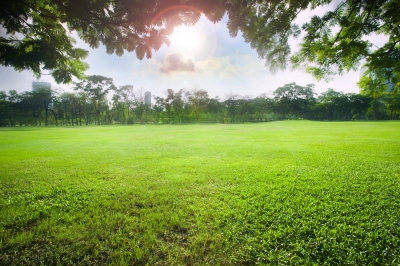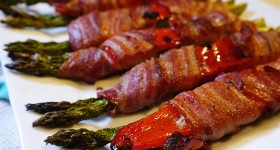
Image courtesy of khunaspix at FreeDigitalPhotos.net
For city-based homeowners, a yard is a symbol of their devotion to their home. They want to eliminate every weed, maintain ideal levels of bright green color, and have a perfect carpet of turf year-round. Anything less is an embarrassment.
Things are a little different in the country, and the discrepancies are more noticeable for those who have started life in the city and then graduated to farm living. This is especially true if the farm life includes livestock.
Everybody knows that a pasture isn’t a giant yard and a yard isn’t a tiny pasture. Management of the two areas is very different. But once you begin to see grass production in pastures and hay fields as a business investment instead of strictly a status symbol, you learn some things that can really change your viewpoint about your yard.
Let’s look at some of the ways that you’ll learn in farming that will make you a different kind of greenskeeper for your home.
An Appreciation For Seasons
As you peruse the available products of Nature’s Finest grass seed, you’ll see many different varieties. But to simplify, grasses fall into two major categories: cool season and warm season. Cool season grasses include fescue, Bluegrass, and common farm forages like orchardgrass and timothy. These plants begin growing in the first warm weather of spring, then go dormant (to the layperson, “dead”) during the hottest, driest parts of summer. After things cool down, their growth resumes and can last well past the first frost.
Warm season grasses like bermudagrass are the opposite. It takes real warmth to trigger their growth, but they thrive through the summer while their cool-season cousins are resting. As fall approaches, the first frost is the end of the show for them.
Understanding these differences can make a big difference for you. If you want a summertime lawn for durable performance through weekend volleyball games or flash-mob baseball games, you might prefer a warm-season grass. But if that flush of green excites you as winter fades away and you don’t mind mowing in November, stick with cool.
An Understanding Of Fertilizer
There’s no shortage of jokes about livestock and fertilizer. We all know that animal waste is a quality fertilizer, stimulating deep green color and fast growth wherever it lands. This makes even small-scale livestock production a very cost-effective way to fertilize. But we can see from the random pattern of waste deposition by pastured animals that there is still good growth and color where the manure hasn’t recently been landed. We can also see that those heavily-fertilized spots grow much later in the season, and those areas with excessive amounts don’t look very good.
The message here is that fertilizer should be a balanced thing, that you should test your soil and get precision recommendations on the amount of each nutrient that’s needed. Heavy nitrogen applications will have you mowing grass past Thanksgiving and can prove detrimental to the grass due to diseases and simple burning by the chemistry of the manure.
Ideas For Weed Control
Good management of pastures and hay fields involves keeping weeds at bay. But most farmers exercise a judicious use of chemicals for this purpose, instead utilizing other techniques to manage undesired plants. Once again, it’s a business decision: Healthier pastures and hayfields are cheaper than chemical-soaked ones.
Overall, the health of the desired plants is the first step. Proper establishment and fertilization of grasses make it harder for weeds to get a foothold. Other management techniques can help as well, such as taking advantage of the height difference between weeds and grass to make targeted herbicide applications or to simply clip off the weeds before they produce seed.
That last point is especially important. Most weeds are annuals, meaning they return from seed each year. If you can kill or cut weeds before they reach that stage each year, you’ll quickly thin their population.
Living on a farm is an educational experience if you’re open to it. When you observe the chemistry and biology that’s at work in the grasses on your hay and pasture fields, you’ll understand a lot more about the ones in your yard.




















I feel like we should pay attention to how the native Americans grew crops. They didn’t have the biotech and fertilizer we have, but were able to achieve enough sufficient yields to last an entire season. Thanks for writing!